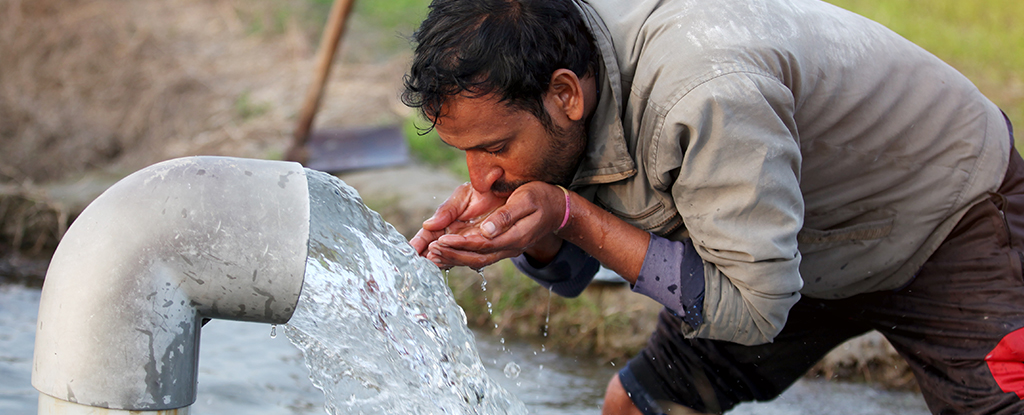Products You May Like
Without easy access to freshwater lakes, streams, and dams, roughly one out of every four humans depends on reservoirs beneath Earth’s surface for survival.
By the end of the century, tens to hundreds of millions could be deprived of even this tenuous supply of moisture as rising temperatures risk turning shallow groundwater supplies into toxic sumps.
An international team of researchers developed a global-scale model of heat transport to put hard numbers to the temperature changes of groundwater sources around the world under various warming scenarios.
In the worst case, nearly 590 million people in 2100 could be reliant on water sources that don’t meet the strictest standards for potable water.
In an age where heat waves, melting ice caps, and rising oceans regularly attract headlines, we rarely give a lot of thought to the effects of global warming on the land itself.
“A lot of focus on climate change has rightfully been to do with weather events and the availability of water,” explains hydrologist Dylan Irvine from Charles Darwin University in Australia.
“But we do need to think more broadly about the impact that climate change will have on groundwater.”
It’s true the strata of rock and soil beneath our feet don’t match seawater’s talent for absorbing heat. Nonetheless, it’s surprising so little attention has been paid to the consequences of warming groundwater, especially when qualities like scarcity and recharge rates have been the subject of so much scrutiny.
As it is, water trapped within porous rocks just below the surface can be full of dissolved minerals, pollutants, and potential pathogens, often making it a desperate last resort for communities reliant upon it.
Warm these slow-moving reservoirs by just a degree or two, and the results can be catastrophic, robbing the environment of oxygen and facilitating the growth of dangerous bacteria, or dissolving excessive concentrations of heavy metals like arsenic or manganese.
“There are already about 30 million people living in regions where the groundwater is warmer than stipulated in the strictest drinking water guidelines,” says the study’s lead author Susanne Benz, a geoscientist at the Karlsruhe Institute of Technology in Germany.
“That means it may not be safe to drink the water there without treatment. It may need to be boiled first, for example. The drinking water also gets warmed up in water pipes by heat in the ground.”
Even for populations with sufficiently-sized surface reservoirs nearby, discharges of heated groundwater could alter key dynamics that keep its water safe for human consumption.
Under a business-as-usual ‘shared socioeconomic pathway‘ where little changes, we could expect current figures to more than double, with 77 to 188 million people projected to live in an area where groundwater fails to meet the strictest of standards for drinkability by 2100.
In an extreme case of escalating carbon emissions, a mind-blowing 588 million individuals could require their local water to undergo significant treatment before putting a drop in their mouths.
Not all locations will be at equal risk. Regions with deep water tables, such as the Andes and Rocky Mountains, could remain safe as waters stay cooler for far longer.
Conversely, communities in areas with shallow water systems or exceedingly high rates of atmospheric warming will almost certainly need to cope with groundwater temperatures rising to concerning levels.
In many cases, these are also the communities with the fewest resources available for making their water safe.
The team has developed an interactive Google Earth Engine application to allow anyone to explore the projected changes in their area.
“Our results show how important it is to take action to protect groundwater and find lasting solutions to counteract the negative impact of climate change on groundwater,” says Benz.
This research was published in Nature Geoscience.
